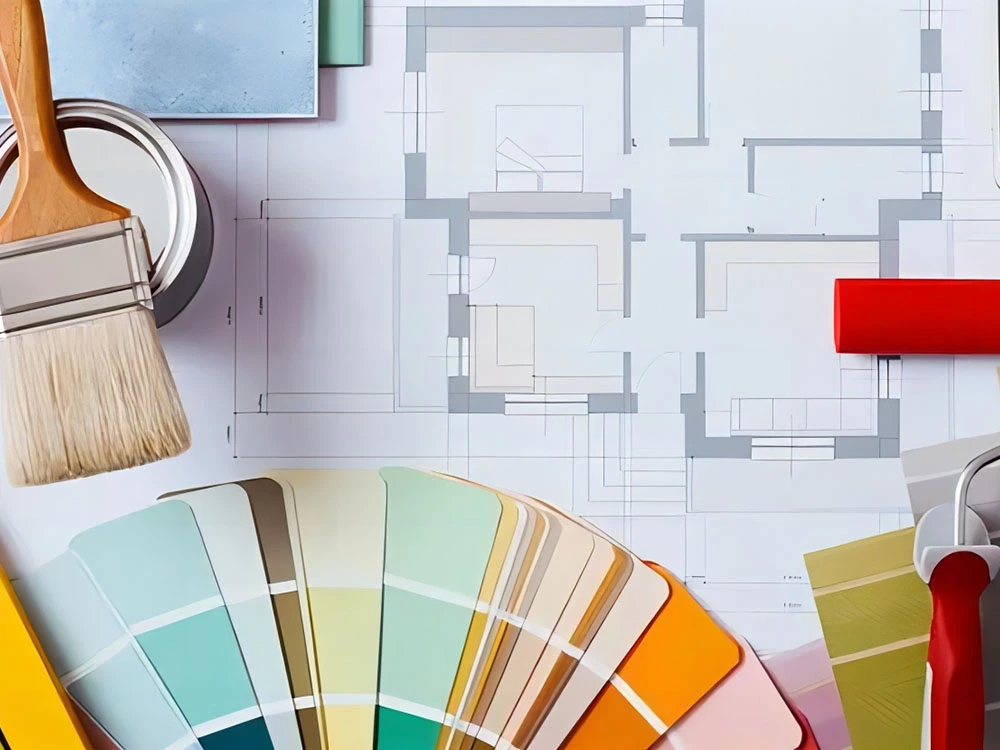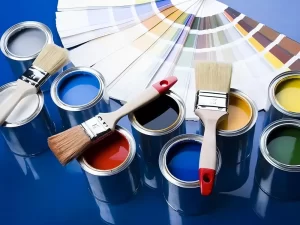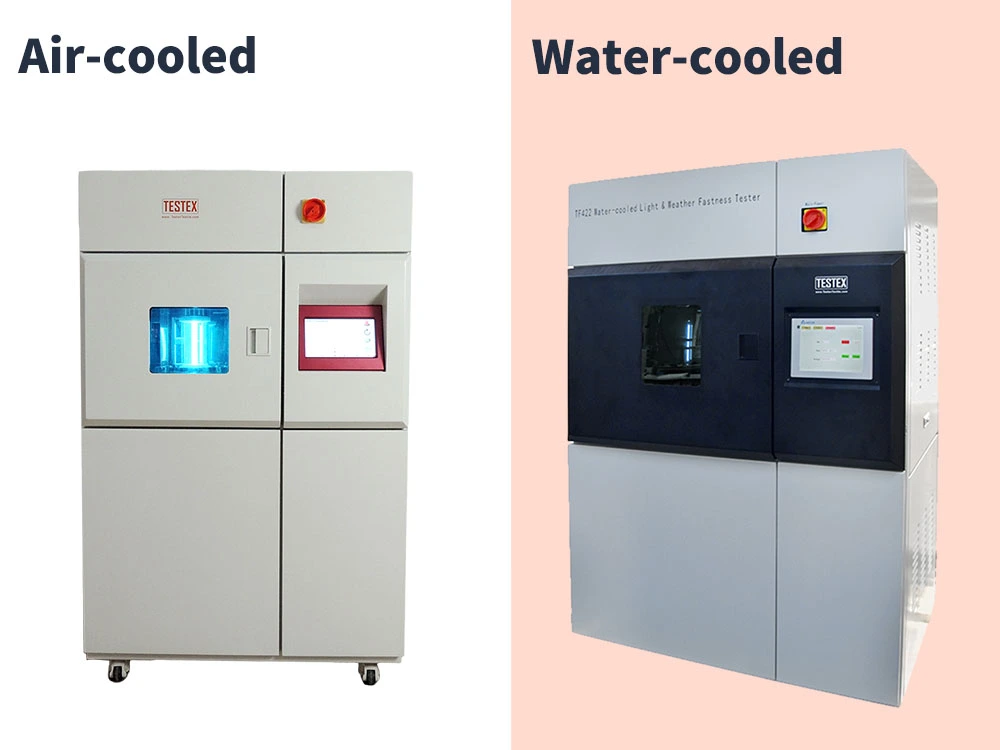Paint weather resistance is the phenomenon of paint coatings aging due to external conditions. Sunlight, air, and water can lead to paint fading, cracking, discoloration, and chalking. Among them, UV radiation is the key factor in promoting coating aging.
Buildings and cars exposed to the outdoors suffer great losses due to aging coatings. This phenomenon has gradually attracted attention and become the focus of concern. Thus, the coating’s weathering performance is particularly important for its quality.
Test Background
Coatings are indispensable materials for various building decorations. Multiple industries use them in construction, transportation, engineering, and other fields. However, because they are affected by the environment, coatings are prone to peeling, flaking, and cracking. Thus, to ensure the quality of the coating, it is necessary to test its aging resistance.

Factors affecting coating aging:
The causes of coating aging include internal and external causes. The internal causes are the coating film-forming materials, pigment fillers, and additives. The internal cause is also very much related to the coating formulation system. External causes are the coating exposure to the outdoor environment by many factors. The main factors are sunlight, rain, air temperature, oxygen, mold, and industrial gases.
Radiation, temperature, and water are major factors in material aging resistance. These three factors also have a complex synergy.
Optical radiation:
The solar spectrum consists mainly of ultraviolet, visible, and infrared spectra. Ultraviolet radiation causes the most damage to materials. The shorter the UV wavelength, the greater the absorption of UV by the material. The shorter the wavelength, the greater its photon energy and the damage to the material.
Temperature:
When degrading the material, the reaction rate increases by a factor of 1 for every 10 °C increase in temperature.High temperatures can have a large effect on free radical photochemical reactions. They increase molecular movement and improve oxygen and radical diffusion efficiency.
Water :
The effect of water on the material in the form of spray, condensation, immersion, and humidity. Water is a carrier that carries large amounts of oxygen inside the material as it penetrates. This induces chemical changes within the material and precipitates material additives. Water infiltration causes the surface layer to expand, creating stresses with the inner. When evaporation occurs, contraction occurs, causing the opposite stress. This transformation produces a fatiguing effect that leads to the cracking of the material.
Water acts as a plasticizer and lowers the coating glass transition temperature. Plasticizing makes it easier for small molecules to migrate through the coating. Water displaces other molecules within the coating or between the coating and substrate. This displacement can lead to a loss of coating adhesion. Besides, the coating absorbs moisture and expands, resulting in a change in stress. However, this change is limited by its adhesion to the substrate.
Test Method
Experimental Procedure
- Preparation of samples:
Prepare the coating samples according to the ratio and coat them on the substrate. Typically, people choose aluminum, glass, or other materials as the coating substrate.

- Substrate Exposure:
The coated samples are placed in specific exposure equipment. Expose it to different climatic conditions such as sunlight, rain, humidity, etc. - Data collection:
Photographs of the samples are taken at a specific time, and data is recorded and collected. These data can be used to analyze and evaluate the paint. - Data analysis:
After data collection, data analysis and evaluation are performed. Based on the test results, the ageing resistance of the coating is evaluated.
Aging Resistance Test Standards
Commonly used aging resistance test standards are ASTM, ISO, etc. Among them, ASTM G53, G154, G155, etc. are widely use.
- ASTM G53-96: Standard for cyclic exposure with ultraviolet lamps
- ASTM G154: Standard for cyclic exposure to UV and water
- ASTM G155: Standard for intense ultraviolet accelerated aging test
Coating aging test method
Different factors cause irreversible changes in the use of coatings. This eventually leads to the destruction of the coating, which is the aging of the coating film. Coating aging test divided into natural exposure and artificial accelerated aging test.
Natural Exposure Test
The natural exposure test exposes the coating to the natural environment. Therefore, the weathering performance of the coating in a specific environment is to examine. Natural environments fall into a variety of climates based on their characteristics, such as dry hot climates, humid hot climates and humid hot industrial climates.
The natural exposure test is the most widely use method at both domestic and international level. This is because the test results are more realistic, the cost is lower, and the operation is simple.
The disadvantage of the natural exposure test is that the test takes a long time. Testers may not have so many years to wait for a product’s test results. Besides, the climate is unlikely to be the same year after year. Thus, the reproducibility of test results is not ideal.
Artificially accelerated aging test
The artificially accelerated aging test simulates the climate chamber’s natural climate. Compared with the natural exposure test, the accelerated aging test involves a few factors, such as light intensity, temperature, spray, condensation, humidity, and other factors. Control、adjust these few factors to achieve the purpose of the accelerated aging test. The coating aging test used is ultraviolet lamp type, xenon arc lamp type, and carbon arc lamp type.
①Fluorescent ultraviolet lamp aging test
Fluorescent ultraviolet lamps currently have three types: UVA-340, UVA-351, and UVB-313. UVA-340 simulates short—and medium-wave UV without visible light and infrared radiation. UVA-351 simulates the short- to medium-wave UV rays that pass through glass, but is not commonly available.
UVB-313 has a peak wavelength of around 313 nm and strong radiation below the natural UV cutoff. Although this is generally considered unrealistic and should by avoided, it is still in use in some standards.
The UV aging tester controls changes in light/dark cycle, temperature, and humidity. This simulates various natural environments, such as day and night, indoors and outdoors. The UV aging test uses fluorescent UV lamps to simulate the damaging effects of sunlight on materials. Fluorescent UV lamps are like cold fluorescent lamps but produce more UV light.
The UV aging test is a poorer simulation than the xenon lamp test.Rapid screening of specific materials is possible by selecting lamps. Due to its high acceleration, it is still widely in use today.It can simulate the damage to coatings in a more realistic outdoor humid environment.
②Xenon Lamp Aging Test
The xenon arc radiation test is considered to simulate the full solar spectrum best. This is because it produces ultraviolet, visible, and infrared light. Therefore, it is the most widely applicable method of accelerated ageing. Xenon lamps use different optical filters to regulate their irradiance. The irradiance of xenon lamps is referenced to the solar spectral irradiance distribution. It simulates the outdoor climate conditions and the aging resistance of indoor materials. Xenon aging testing not only reduces the risk of premature product failure. It also provides rapid and stable screening of new materials or formulations.
At present, the xenon lamp aging test chamber mainly has two kinds of water-cooled and air-cooled.Generally speaking, the cooling effect of the water-cooled type is better than the air-cooled type.
The xenon arc lamp light source must be filtered to cut undesired radiation. A variety of filter glass types are available to achieve different irradiance distributions. The choice of glass depends on the type of coating and its end use.
Most xenon arc radiation tests simulate wetting conditions using a water spray. Use high purity water to prevent deposits from forming on the surface of the test plate. As a result, the xenon arc radiation test is expensive to run.
③ Carbon arc lamp aging test
Carbon arc lamps were the first artificial radiation light source to accelerate ageing. Divided into two types, a closed carbon arc lamp, and a sunlight carbon arc lamp. However, the spectral distribution of carbon arc lamps is different from that of sunlight. The simulated spectral range is narrow, has high costs, and is now rarely used.
Acceleration and Correlation
People have conducted many correlation tests between natural exposure tests and artificial ageing tests.The following is a simple correspondence that people have derived from our experiments:
x h ( MJ) artificial accelerated aging test = y months (years) of natural exposure test
Therefore, we can obtain an acceleration factor for practical purposes.However, the acceleration factor has significant limitations. Because acceleration and correlation are contradictory. Good acceleration, poor correlation.No laboratory exposure experiment can completely simulate exposure under actual outdoor conditions. Artificially accelerated aging experiments are no exception.
Conclusion
Although everyone agrees that weathering and lightfastness of coatings are important, but, there are different opinions on what is the best test method for them. There are many ways to test the weathering and light resistance of coatings.
The Xenon arc radiation and ultraviolet light aging test is a widely used method. The xenon lamp test chamber imitates the full solar spectrum and simulates sunlight. The UV aging test does not attempt to imitate the sun’s rays but only the destructive effects of the sun’s rays.
Besides, there is an accelerated method even for natural climate aging tests. The test specimen is mounted in a specimen rack that rotates as the sun rises and sets. The sample is kept in direct sunlight for most of the time to get accelerated test results.
The durability of the coating film is the service life of the coating film. It is the most important quality index of paint and is a manifestation of various properties. A weathering test of coatings is very necessary. It is the key to improving the wearability and quality of the coating film.
The coating weathering test is more and more widely used in the field of coatings. Coating weatherability measures the resistance of coatings to environmental influences. Weathering resistance test method standards are indispensable in the coating industry. Due to the long cycle of the natural exposure test, it is greatly affected by uncertainties. Recently, the artificially accelerated aging test has been included in the coating product standards. The artificially accelerated aging test helps to check the aging resistance of coatings. This ensures that the coating maintains good decorative and protective properties.
For more environmental test chamber, Please visit: https://chiuventionclimatechamber.com
For more environmental test simulation programmes,environmental testing knowledge, instrument knowledge, and environmental testing laboratory knowledge, please contact us: [email protected]
